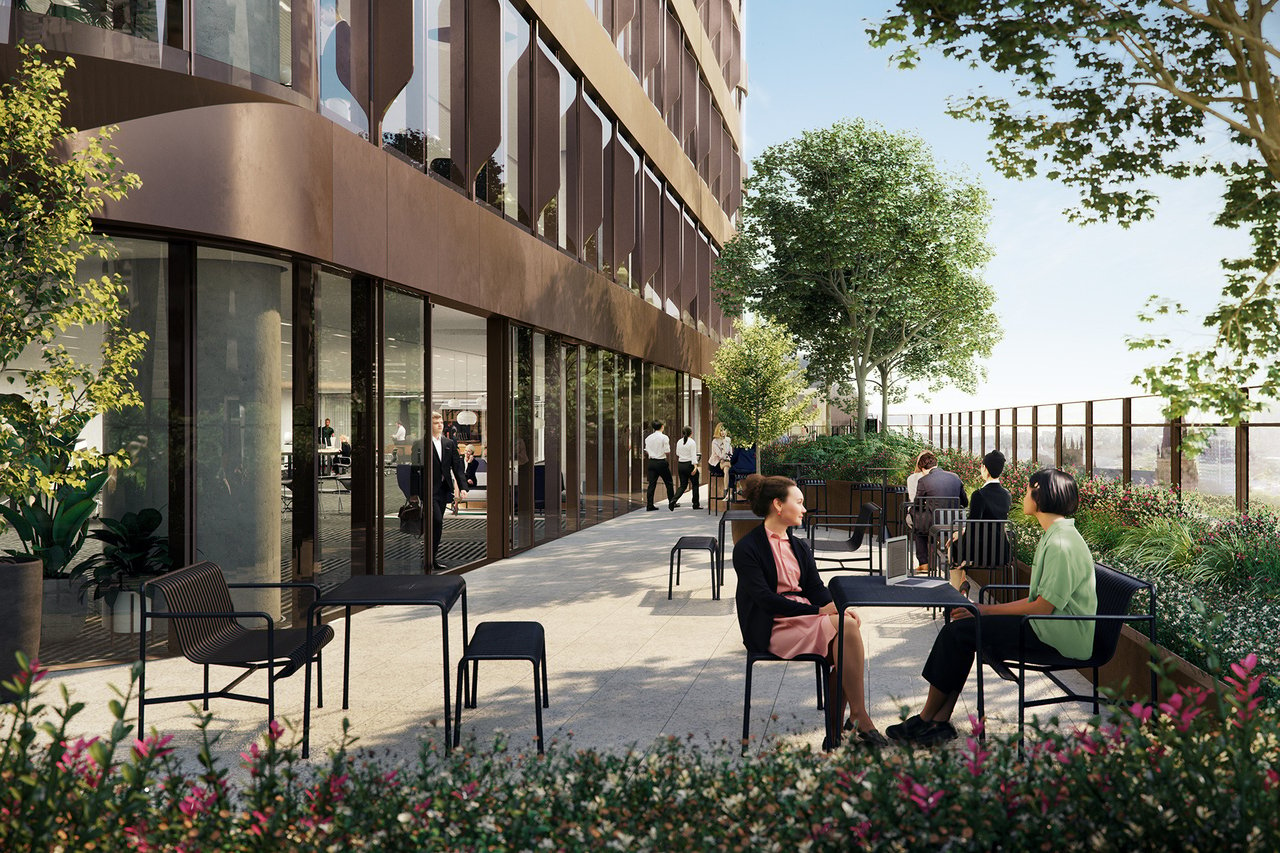
Parkline Place – fully electrified with renewable energy and set for net zero operation - Part 1
Design and construction for net-zero
Parkline Place has achieved a 6-Star Green Star v1.3 Design rating from the Green Building Council of Australia which represents world leadership in sustainable buildings. Key to this achievement is electrification of the building, which involves a lot more than simply removing natural gas sources and powering the building with renewable energy.
Developer Investa worked closely with world-renowned architects, Foster + Partners, to make critical decisions about sustainable design in construction and operation. The result is that Parkline Place is much more than a striking new CBD landmark, and the work starts well before the construction crew arrives for day 1 on site.
“The first step is minimising overall energy consumption through passive design measures and optimising residual energy use,” says Hannah Edwards, Development Manager, Investa.
“Design features to reduce building energy needs include a high-performance curtain wall façade that maximises natural light, with curved sun hoods providing shade on the east and west elevations.
“We took the approach to future proof the building by installing electric heat pumps, instead of gas boilers, which will enable it to operate on 100% renewable electricity. The lower energy needs from smart building design help decrease electrical loads, with the building designed to achieve a 5.5 Star NABERS Energy rating.”
At Parkline Place, the reduction of upfront embodied carbon is just as critical as achieving net zero in operations. A whole of life cycle analysis determined the building’s largest contributors to carbon emissions and help guide sustainable material selection.
The use of post-tensioned slabs reduced 65 per cent of required structural steel reinforcement and 40 per cent of concrete material, compared to traditional slab construction. The building also uses locally sourced concrete and a low carbon mixture for 70 per cent of the structural slabs and columns. In addition, 16 per cent of the building materials by cost are either reused, recyclable or environmentally certified.